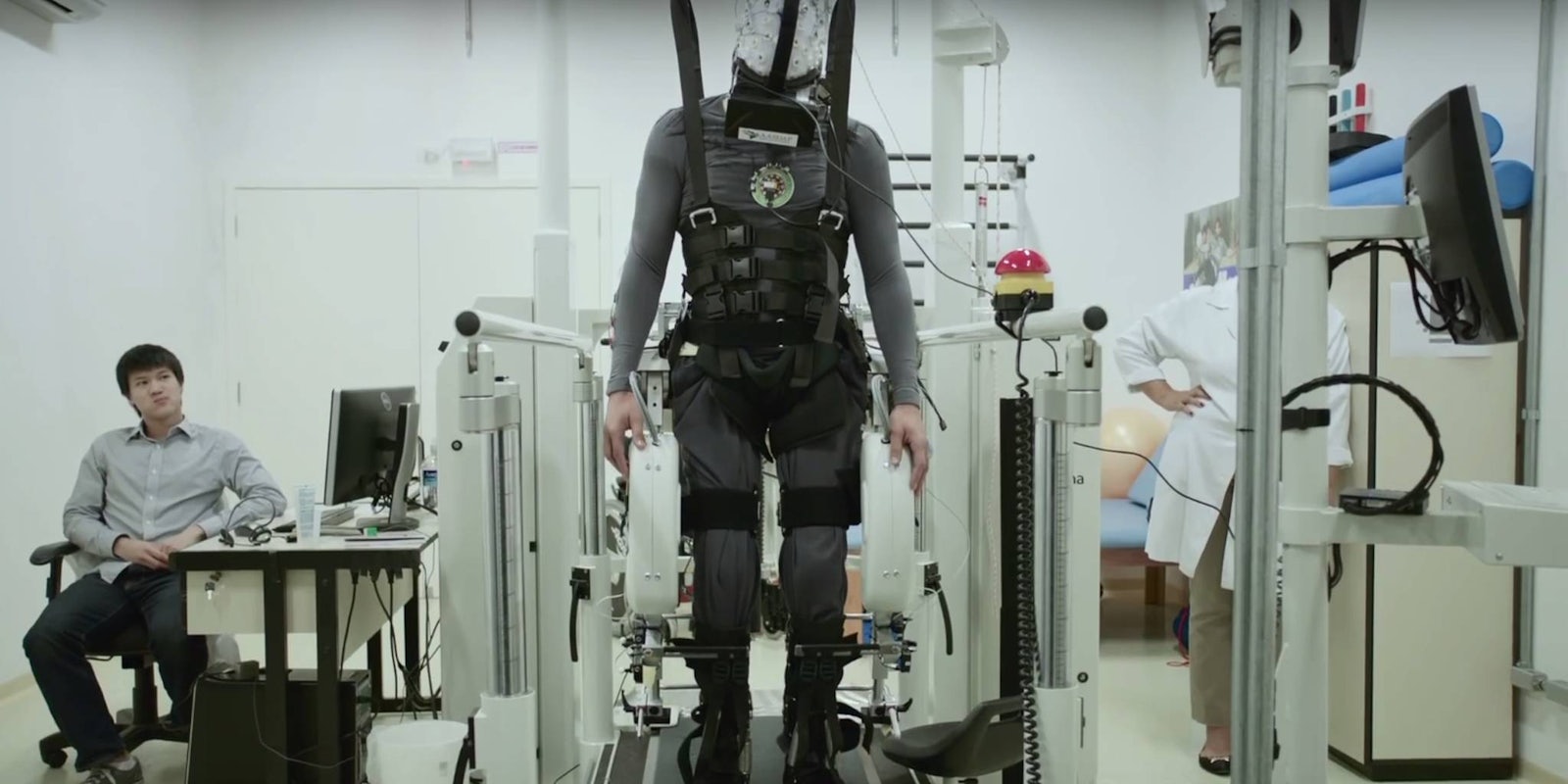Through virtual reality and a brain-controlled robotic exoskeleton, paraplegics regained some physical sensations and motor control, according to a study that investigated the long-term effects of training patients on brain-machine interfaces.
Eight patients worked with researchers for a year to determine whether using their brains to observe and then control avatars could also allow them to move themselves assisted by robotics. The research was published in Scientific Reports this week.
Patients were asked to visualize moving their lower limbs and then were taught to use EEG activity (brain signals) to control avatars in virtual environments. Eventually, they moved on to controlling a lower-limb exoskeleton using the same method they did when they controlled their avatars.
https://www.youtube.com/watch?v=MuzDaFcjlC0
All eight participants experienced improved physical sensations and some voluntary motor control, and four were upgraded from chronic complete injury to an “incomplete paraplegia classification.” The results surprised researchers, and the study is the first to suggest that brain-computer interfaces coupled with physical feedback could lead to partial neurological recovery.
Unexpectedly, at the end of the first 12 months of training with the WA-NR protocol, a comprehensive neurological examination revealed that all of our eight patients had experienced a significant clinical improvement in their ability to perceive somatic sensations and exert voluntary motor control in dermatomes located below the original [spinal cord injury].
The research is part of the Walk Again Project, the group that helped a paraplegic patient literally kick off the 2014 World Cup during opening ceremonies using a brain-controlled exoskeleton.
Researchers concluded that therapies that use virtual reality and progress to prosthetic devices powered by EEG should be considered a new neurorehabilitation therapy, not just a new assistive technology.


